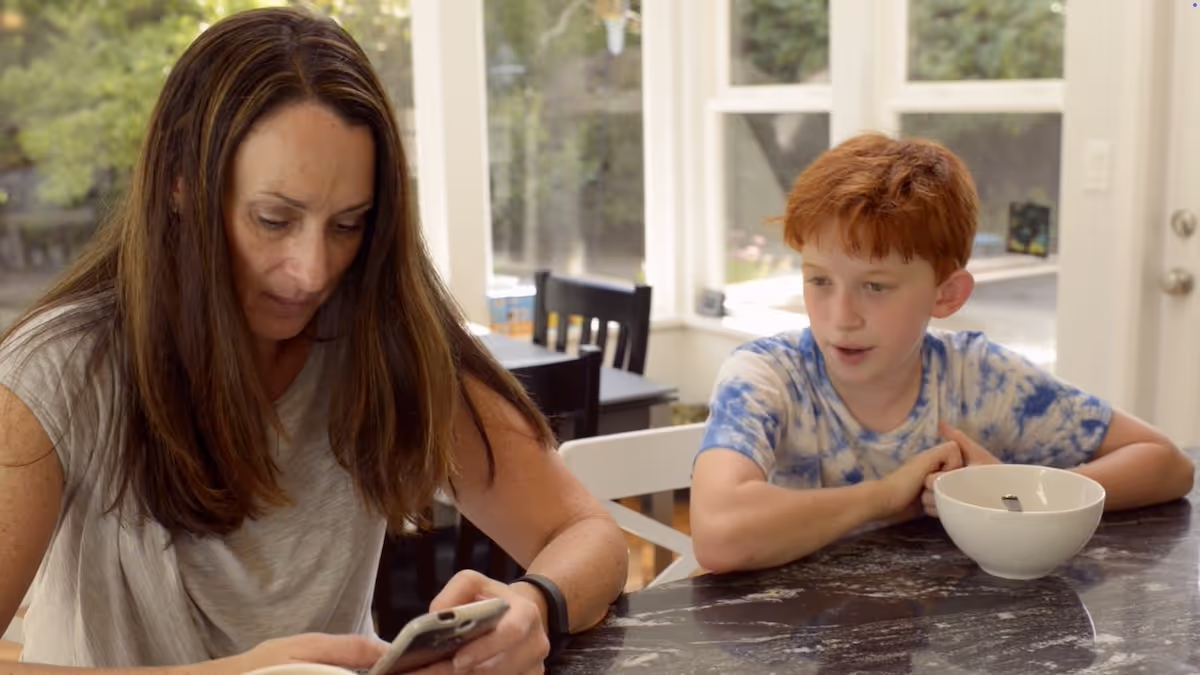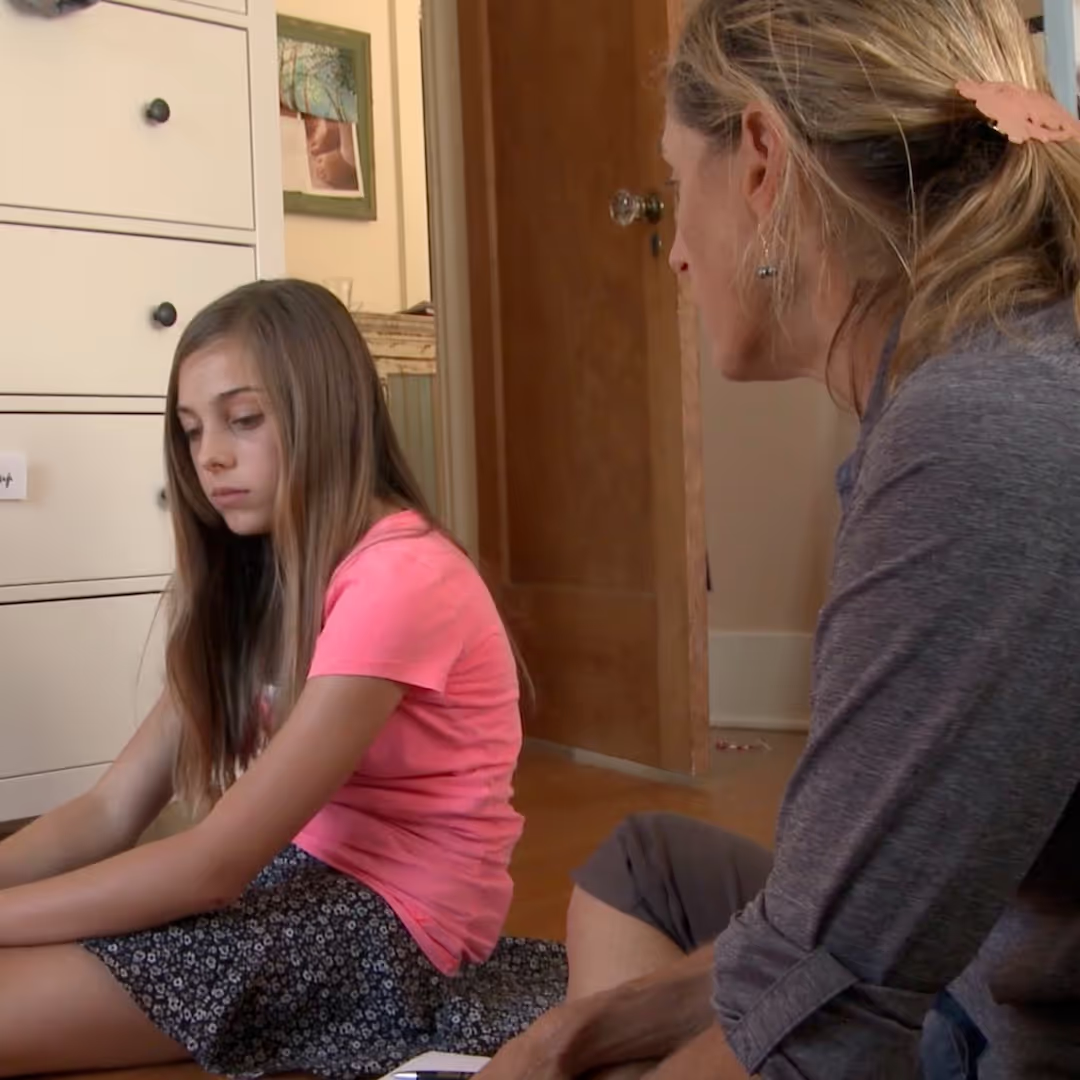


As we all know, a horrific tragedy is happening in the Middle East. It is yet another call to action for us adults to proactively mitigate the negative impacts of media seen by our kids and teens.
Today, I am concentrating on three steps to help protect our kids from the downsides of social media and overall screen time, especially given the prevalence of violence, misinformation, and distressing content right now.
Many teens feel that staying well-informed is a sign of solidarity and is the right thing to do. However, there are many cracks in this logic. While there is no need to contest their thoughts on this directly, it is important to create safeguards around what and how much every child, young and old, is seeing.
Ask your kids where they hear and see things about the Middle East conflict and other hard news. This is key because it might be from places we haven’t even considered. Perhaps they are watching YouTube videos. Some teens have shared that there is a TV in the cafeteria with news on it at their high school. Many see things on Instagram or TikTok.
There are many problems with the media diet getting fed to our kids. One issue is that the more shocking a video or image is, the more plays it will get on social media. The business model favors eyeballs on screens; thus, platforms like X (formally Twitter) and others have little incentive to prevent such content from being disseminated.
And that goes for false information, too. The amount of false information and fake images distributed is a big problem. This issue is so big that I will write a separate blog about it soon, but if you want more on this, check out my past blog posts, How To Think Like A Fact Checker and Helping Youth Navigate War Videos on TikTok.
Learn more about showing our movies in your school or community!
Join Screenagers filmmaker Delaney Ruston MD for our latest Podcast

Learn more about our Screen-Free Sleep campaign at the website!
Our movie made for parents and educators of younger kids
Learn more about showing our movies in your school or community!
Have the family bring phones, iPads, and computers to the table and together optimize settings in Youtube, Instagram, TikTok, etc., to improve what and how much gets seen. Here are some pointers:
Back in 2022, Instagram launched a setting option called “Suggested content” to help people choose to have less intense violent and sexual content.
YouTube
Disable autoplay. Last night, I did just that. Here is how to do this.
With YouTube’s app, one can also stop autoplay.
Also, one can choose "Restricted mode" in the settings, which helps hide content that YouTube deems “potentially mature.”
Tiktok
Make sure the “For You” page is set to "Restricted mode." I know firsthand that the “Restricted mode” still lets in all sorts of videos that I think are inappropriate. But in terms of harm reduction, it is worth putting it on. Here is how to do this.
Learn more about showing our movies in your school or community!
Join Screenagers filmmaker Delaney Ruston MD for our latest Podcast

Learn more about our Screen-Free Sleep campaign at the website!
Our movie made for parents and educators of younger kids
Join Screenagers filmmaker Delaney Ruston MD for our latest Podcast
Also, for TikTok, it can be an ideal time to try out the Family Pairing system with your teen, where you link your account with them and customize their settings, such as the amount of daily use. In the "Family Pairing" tool, you can do things like filter video keywords. Here is how to do this.
Remember to talk about how we are working on this together so this is not me vs. you. After all, there are ways to get around these types of settings.
As we’re about to celebrate 10 years of Screenagers, we want to hear what’s been most helpful and what you’d like to see next.
Please click here to share your thoughts with us in our community survey. It only takes 5–10 minutes, and everyone who completes it will be entered to win one of five $50 Amazon vouchers.
As we all know, a horrific tragedy is happening in the Middle East. It is yet another call to action for us adults to proactively mitigate the negative impacts of media seen by our kids and teens.
Today, I am concentrating on three steps to help protect our kids from the downsides of social media and overall screen time, especially given the prevalence of violence, misinformation, and distressing content right now.
Many teens feel that staying well-informed is a sign of solidarity and is the right thing to do. However, there are many cracks in this logic. While there is no need to contest their thoughts on this directly, it is important to create safeguards around what and how much every child, young and old, is seeing.
Ask your kids where they hear and see things about the Middle East conflict and other hard news. This is key because it might be from places we haven’t even considered. Perhaps they are watching YouTube videos. Some teens have shared that there is a TV in the cafeteria with news on it at their high school. Many see things on Instagram or TikTok.
There are many problems with the media diet getting fed to our kids. One issue is that the more shocking a video or image is, the more plays it will get on social media. The business model favors eyeballs on screens; thus, platforms like X (formally Twitter) and others have little incentive to prevent such content from being disseminated.
And that goes for false information, too. The amount of false information and fake images distributed is a big problem. This issue is so big that I will write a separate blog about it soon, but if you want more on this, check out my past blog posts, How To Think Like A Fact Checker and Helping Youth Navigate War Videos on TikTok.
Have the family bring phones, iPads, and computers to the table and together optimize settings in Youtube, Instagram, TikTok, etc., to improve what and how much gets seen. Here are some pointers:
Back in 2022, Instagram launched a setting option called “Suggested content” to help people choose to have less intense violent and sexual content.
YouTube
Disable autoplay. Last night, I did just that. Here is how to do this.
With YouTube’s app, one can also stop autoplay.
Also, one can choose "Restricted mode" in the settings, which helps hide content that YouTube deems “potentially mature.”
Tiktok
Make sure the “For You” page is set to "Restricted mode." I know firsthand that the “Restricted mode” still lets in all sorts of videos that I think are inappropriate. But in terms of harm reduction, it is worth putting it on. Here is how to do this.
Also, for TikTok, it can be an ideal time to try out the Family Pairing system with your teen, where you link your account with them and customize their settings, such as the amount of daily use. In the "Family Pairing" tool, you can do things like filter video keywords. Here is how to do this.
Remember to talk about how we are working on this together so this is not me vs. you. After all, there are ways to get around these types of settings.
Sign up here to receive the weekly Tech Talk Tuesdays newsletter from Screenagers filmmaker Delaney Ruston MD.
We respect your privacy.
As we all know, a horrific tragedy is happening in the Middle East. It is yet another call to action for us adults to proactively mitigate the negative impacts of media seen by our kids and teens.
Today, I am concentrating on three steps to help protect our kids from the downsides of social media and overall screen time, especially given the prevalence of violence, misinformation, and distressing content right now.
Many teens feel that staying well-informed is a sign of solidarity and is the right thing to do. However, there are many cracks in this logic. While there is no need to contest their thoughts on this directly, it is important to create safeguards around what and how much every child, young and old, is seeing.
Ask your kids where they hear and see things about the Middle East conflict and other hard news. This is key because it might be from places we haven’t even considered. Perhaps they are watching YouTube videos. Some teens have shared that there is a TV in the cafeteria with news on it at their high school. Many see things on Instagram or TikTok.
There are many problems with the media diet getting fed to our kids. One issue is that the more shocking a video or image is, the more plays it will get on social media. The business model favors eyeballs on screens; thus, platforms like X (formally Twitter) and others have little incentive to prevent such content from being disseminated.
And that goes for false information, too. The amount of false information and fake images distributed is a big problem. This issue is so big that I will write a separate blog about it soon, but if you want more on this, check out my past blog posts, How To Think Like A Fact Checker and Helping Youth Navigate War Videos on TikTok.


Parenting in this digital age is full of challenges. I imagine many of you are nodding in agreement. And when we look for advice online, it can feel like a sea of perfect experts with perfect advice: “Just follow these three easy steps and everything will fall into place.” In this week’s blog, I share a story about a moment with my daughter Tessa that did not go quite as planned but ended up teaching us both something important.
READ MORE >
Wow! Summer really goes by fast, doesn’t it? Back-to-school is already here for some and not far away for others. Ahead of this school year, I’ve hand-picked four of our most useful blogs. Practical, timely guides to help you set your family up for a healthier, more balanced relationship with technology in the months ahead.
READ MORE >for more like this, DR. DELANEY RUSTON'S NEW BOOK, PARENTING IN THE SCREEN AGE, IS THE DEFINITIVE GUIDE FOR TODAY’S PARENTS. WITH INSIGHTS ON SCREEN TIME FROM RESEARCHERS, INPUT FROM KIDS & TEENS, THIS BOOK IS PACKED WITH SOLUTIONS FOR HOW TO START AND SUSTAIN PRODUCTIVE FAMILY TALKS ABOUT TECHNOLOGY AND IT’S IMPACT ON OUR MENTAL WELLBEING.
